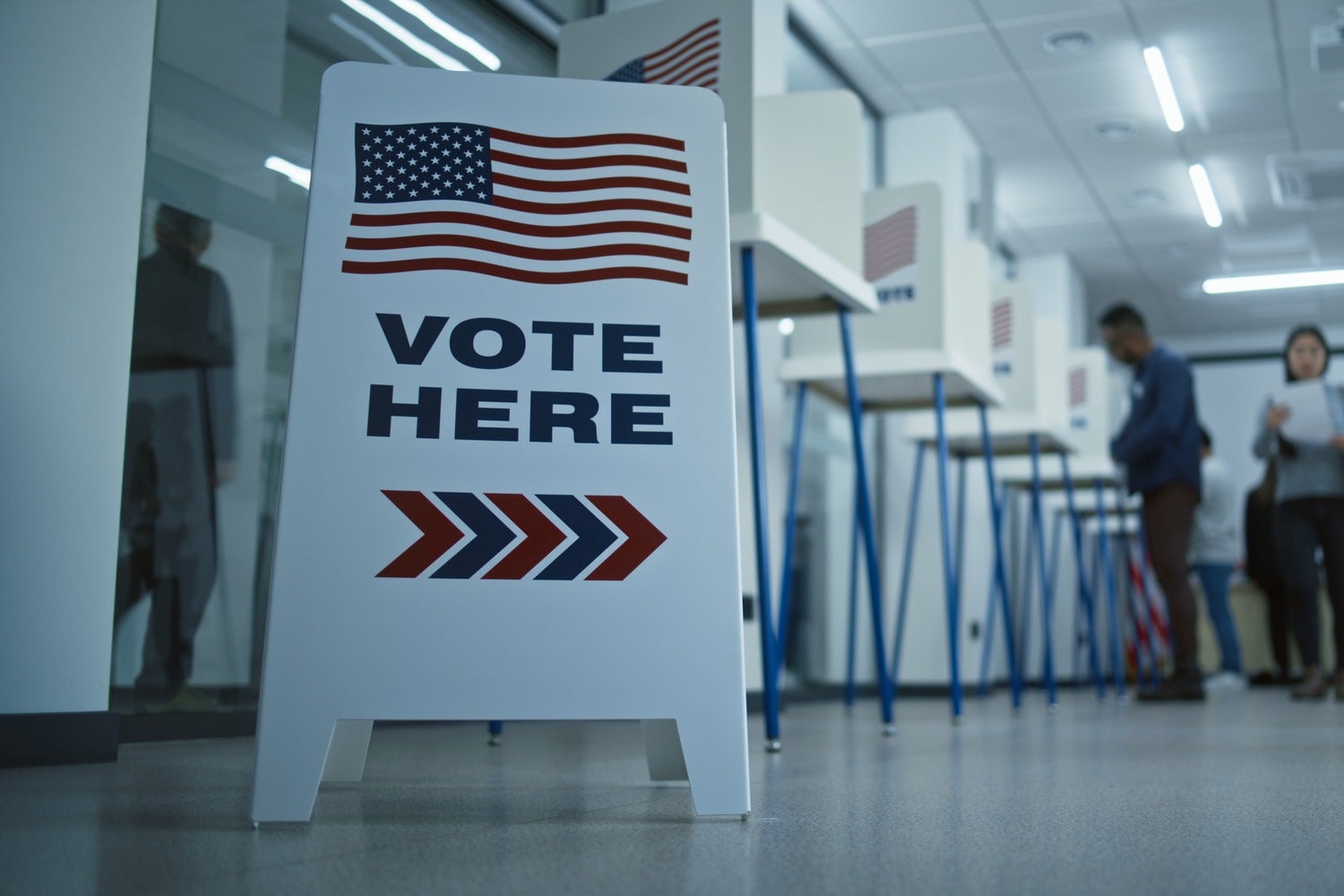Hey team, and welcome back to one5c! ’Tis the season of…seasons. Halloween season, holiday season, apple cider donut season. And, yes, election season. Through whatever time-warping roller coaster 2024 has been thus far, the latter feels like it’s been going on for anywhere from eight days to 18 months. But, as of tomorrow, Election Day is two scant weeks out, and if you’re like me, it’s not-not stressing you out a bit. Thankfully, it’s very possible to redirect that angst into action—and do so in ways that help mobilize voters for whom unwinding the climate crisis is a key issue. Tyler’s got more on that down below… —Corinne
WHAT WE’RE INTO THIS WEEK
By Olivia Gieger

Greenwatch
Amazon’s ‘farewell’ to plastic packing pillows
This month, Amazon announced it will no longer use plastic air pillows to cushion packages, instead opting for recyclable paper padding. The ocean advocacy group Oceana, which has been pressuring Amazon to make the switch for years, views this as a “fantastic” development for reducing plastic waste in the oceans. While this is a win, it’s far from the whole picture: Amazon’s third-party sellers may use such pillows, and perhaps even more significantly, the retailer will still use its classic not-so-recyclable plastic mailers—which are also doomed to live out their days in landfills or as marine litter. Plastic is also one piece of the puzzle: All of those overnighted kitchen gizmos and cheap T-shirts, along with the footprint of the company’s massive data centers, racked up more than 68 million tons of carbon-equivalent emissions in 2023, which is the same as about 184 natural gas power plants.
Study guide
We can’t ‘plant more trees’ our way out of this
Soaring temperatures are undermining the planet’s natural ability to absorb carbon (aka sequester it), a new paper suggests. Though the data is still awaiting peer review, these preliminary results indicate a potentially big problem, as flora and soil often factor into calculations about climate mitigation. According to the analysis, land-based carbon sinks (like forests and soil and wetlands) absorbed almost no carbon last year, due in large part to deforestation, changes in land use, and continued and expanding drought and wildfires. While questions about the complexity of how the planet resorbs carbon still abound, the lesson here is to reduce emissions at the source, Pierre Friedlingstein, one of the report’s authors and a climate modeling researcher at Exeter University, told The Guardian. “We shouldn’t rely on natural forests to do the job. We really, really have to tackle the big issue: fossil fuel emissions across all sectors.”
Cause for optimism
Putting climate on the syllabus
The University of California, San Diego, has added a climate-change course as a graduation requirement. The same way that a student might have to study literature or a foreign language in order to complete their degree, folks starting at UCSD this semester will need to take a class that dedicates at least one-third of its coursework to climate-related topics. To qualify, the course can hit the issue from a range of angles, from digging into hard-core climate science to exploring mitigation strategies. The school says that 40 existing classes already fit these requirements. The move is part of a growing trend to incorporate climate science and solutions into elementary, high school, and college curricula.
Report card
Can renewables keep up with surging demand?
Renewables represent the fastest-growing source of energy in the U.S. and worldwide, but new analysis from the International Energy Agency (IEA) says we need to move faster. Electricity use has grown at twice the pace of overall energy thirst since 2014, and will outpace overall demand by a factor of six in the next 10 years, according to the agency’s annual World Energy Outlook. The spike traces back to the increasing prevalence of electric cars, rising global need for air conditioners (especially in places experiencing extreme warming), and the massive needs of data centers. The IEA leaves readers with a hopeful prediction and a plea: “Emissions are set to peak soon,” the agency writes, “but have to decline rapidly.”
MIC-DROP CLIMATE STAT
9 out of 10
The portion of homes in the U.S. that are underinsulated, according to the Department of Energy. Plugging things up can save up to 20% on a household’s electricity bills. Check out our guide on getting your home prepped for a cozy, energy-efficient winter.
ACTION ALERT
How to get out the climate vote
By Tyler Santora
The presidential election is two weeks away—and the outcome will shape the future of energy and climate in the nation. The first action you can take as an individual is to cast your vote for candidates whose policies and positions support curbing our reliance on fossil fuels and creating and ensuring a just transition to a cleaner economy.
Once you’ve got your own voting plan in place, the next-best thing is to encourage and help other environmentalists and climate-minded folks to get to the ballot box. In your immediate circle of friends and family, that can start by talking to them about their voting plan, and offering to help if they need transportation, child care, or other support to get to the polls. If you’re ready to push outside your community, here are three ways you can jump in:
Mobilize environmental voters
Some 13 million environmentalists in the U.S. don’t vote in federal elections, according to the nonpartisan Environmental Voter Project (EVP). Since 2015, the EVP has transformed 1.8 million of these folks into “super voters,” who consistently participate in federal, state, and local elections. You can volunteer to help them engage even more of the electorate by hopping into one of their phone banks, most of which target swing states like Arizona and North Carolina.
If you’re older, you can also sign up for Elders Climate Action (ECA) and the related program Elders Promote the Vote to phone bank, canvass, and send postcards to nonvoting environmentalists. For the young ’uns, Voters of Tomorrow, a left-leaning advocacy org, organizes phone banks focused on mobilizing Gen Z—who, research shows, are generally more concerned about the climate than previous generations.
Fight voter suppression
Voter suppression, often backed in part by corporate polluters, targets people of color, those with disabilities, young people, and other voting blocs who are more likely to support climate-friendly leaders. Protect the Vote is a nonpartisan group that organizes volunteers to monitor polling places either remotely or from their cars, act as watchdogs on social media to fight disinformation, and connect voters with legal pros who can advise them about their rights.
Another option is to volunteer as a poll worker to keep your local polling place running smoothly and keep an eye out for any form of intimidation at voting sites. This search tool can help you find information specific to your area on how to sign up to be a poll worker, including what training you need, hours, and pay.
Donate to climate voting organizations
If you don’t have time to work the polls or phone bank, there are many groups that offer resources during election season—and that can always benefit from monetary support. Vote Climate U.S. PAC curates helpful guides and scores candidates’ climate policies. Movement Voter Project’s Climate Vote Fund funnels donations to local, grassroots climate groups and works to boost turnout in some of the most pivotal races across the country. And the League of Conservation Voters also puts together environmental scorecards for the representatives of your area.

